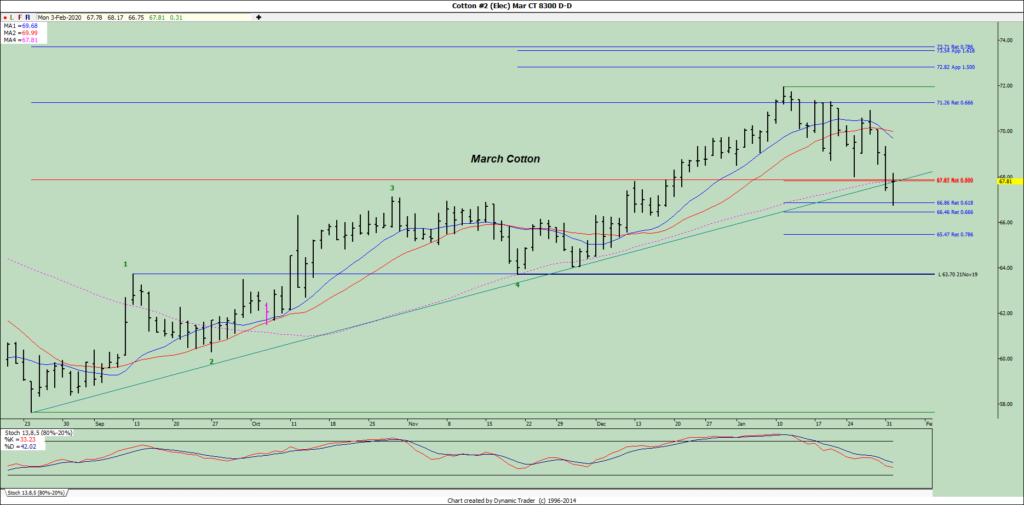While grain and soy markets are somewhat of a mixed bag as we begin this new week and the new month of business, one has to suspect that traders in China only wish they could say as much as they return from the Lunar New Year break. Soy oil, palm oil, eggs, copper, and iron ore are just a sample of markets that pushed limit lower there, and equity markets fell by more than 9% as they began to trade, all reacting to the uncertainty of the coronavirus. The latest numbers I have seen tell us that over 17,000 people in a couple of dozen countries have been infected with around 360 deaths (still at 2%). I suspect that the extreme pressure in China can be partially attributed to playing catch-up since they have been on holiday, but considering they are the epicenter of the virus, the panic would seem to be a bit more justified. This morning, the Chinese government injected 1.2 trillion yuan or around $173 billion of liquidity into markets to try and help provide some stability, even if only psychological. Beginning with African Swine Fever, that we already know wreaked havoc on that nation to the recent outbreak of avian influenza, which by the way is occurring close to the epicenter of the coronavirus outbreak, one has to imagine that more than a few people in that country believe they are cursed.
Of course, we know that African Swine Fever is not restricted to China, and the latest country to go on high alert is Germany. That nation is the largest hog producer in Europe and has been enjoying a surge in exports to China, up 43% last year, due to the outbreak there. Considering that the ASF virus will remain in the meat of the animal even after slaughter, you can imagine there is grave concern that the disease could cross their borders. As we have all become aware, this disease is often carried by wild boars, and evidently, the numbers of boars are quite large in the forested areas on the Polish/German border. In December alone, there were 55 outbreaks of AFS in Poland, and last month an infected boar was killed just 7 miles from the German border. The state of Brandenburg has already constructed a 75-mile-long electric fence across the border as a defensive measure, and the state of Saxony is currently in the process of doing the same.
We did learn last Friday that large specs were selling across the grain and soy markets, with the exception of corn. During the week ending 1/28, they bought just over 34,000 contracts of corn, reducing their short position to just under 80,000 contracts. They were sellers elsewhere and hold net long positions only in Chicago wheat and soy oil.
One might have suspected that with the concerns around the globe would be sending nervous investors into the U.S. Dollar, and while we are fractionally higher this morning, overall, that has not been the safe haven of choice. Gold has been playing that role. While not a wipeout by any means, the dollar did record what appears to be a hook reversal last week, closing lower for the first time in the past five weeks. The MACD had already crossed into negative territory a few weeks back, and this for the first time since early in 2018. I continue to believe this will be the market to watch in 2020 for a clue as to the potential for our commodities.
